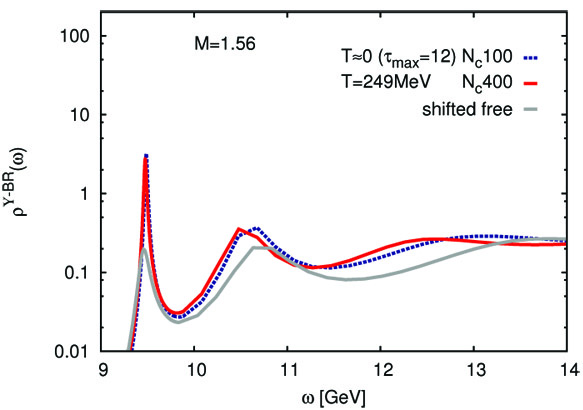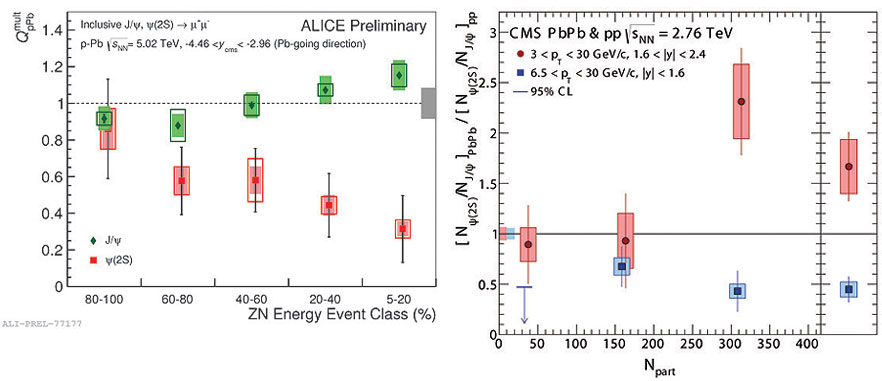
INSTITUTE FOR NUCLEAR THEORY
News
Home | Contact | Search | News archive | Site Map

|
INSTITUTE FOR NUCLEAR THEORY News
Home | Contact | Search | News archive | Site Map |
|||||
|
(INT Program September 15 - October 10, 2014) Reported by A.D. Frawley, P. Petreczky, E. Scomparin, R. Vogt Date posted November 13, 2014 |
|
The Institute for Nuclear Theory program, Heavy Flavor and Electromagnetic Probes in Heavy-Ion Collisions (INT 14-3), was held 15 September
to 10 October 2014. In addition to the four organizers: Ramona Vogt (LLNL
and UC Davis), Peter Petreczky (BNL), Anthony Frawley (Florida State),
and Enrico Scomparin (INFN Torino), the program was attended by 34 other
participants spread out over the four week period. Almost all participants
were recognized experts in the field and were invited to take part. Eight of
the participants were postdocs and five were women.  Figure 1: The ϒ spectral function for T = 249 MeV and T = 0 both reconstructed with 12 points in the time direction using the novel Baysian approach. 
Figure 2: (Left) The nuclear modification factor QpPb;mult for the J/ψ and ψ(2S) states at backward (Pb-going) rapidity, measured by ALICE, as a function of the centrality of the p+Pb collision (0-20% corresponds to most central events). (Right) The ratio ψ(2S)/J/ψ for Pb+Pb collisions, normalized to the same quantity in pp, plotted as a function of Npart. The results are presented for two different pT ranges. The right-most points correspond to the centrality-integrated sample. |